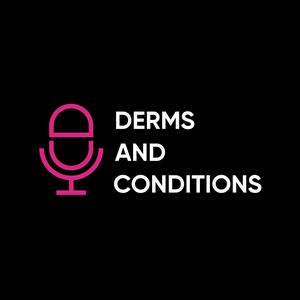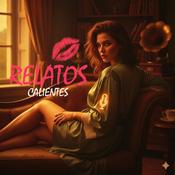141 episodios

From the Benchtop to the Treatment Room: Important Questions Answered About Topical Clascoterone
08/1/2026 | 23 min
In this episode of Derms and Conditions, host James Q. Del Rosso, DO, is joined by Zoe Draelos, MD, for an in-depth discussion of 3 practical questions surrounding topical clascoterone, informed by studies Dr Draelos helped conduct. Together, they translate study findings into real-world considerations for using clascoterone as part of combination acne regimens. The conversation begins with the role of formulation and vehicle design, addressing a common concern in acne management: barrier disruption and application-site irritation. Unlike retinoids or benzoyl peroxide, clascoterone is an androgen receptor inhibitor formulated in a vehicle shown to sustain and slightly increase moisture content in the skin, supporting barrier function while remaining compatible with other topical acne therapies. Data evaluating transepidermal water loss and corneometry demonstrate that the finished, marketed formulation sustains skin moisturization, reinforcing its barrier-friendly profile. The discussion then turns to real-world use, where clascoterone is frequently combined with other topical agents. An admixture stability study examined whether clascoterone degrades, or causes degradation of, commonly used acne treatments such as benzoyl peroxide, clindamycin, adapalene, and retinoids. Using chromatographic and mass spectrometric analysis, the study confirmed that clascoterone remains stable and compatible when layered with these agents. Finally, Dr Draelos reviews clinical data demonstrating progressive sebum reduction in patients with mild to moderate acne, measured using standardized sebumeter technology. Sebum levels decreased beginning around 12 weeks and continued to decline through 52 weeks, paralleling reductions in acne lesions, oily appearance, and visible pore size. Together, these findings clarify how clascoterone works at the target organ level and why its clinical benefits extend over time. Tune in to the episode to hear how these studies answer key mechanistic and practical questions about clascoterone, and how its barrier-friendly formulation, combination compatibility, and sustained sebum reduction may inform everyday acne management in clinical practice.

Greatest Hits of Derms and Conditions 2025
18/12/2025 | 28 min
In this 2025 Year in Review solo episode of Derms and Conditions, host James Q. Del Rosso, DO, reflects on the standout conversations, clinical insights, and new formats that shaped the series over the past year. Dr Del Rosso opens by highlighting the launch of Tea with Dr. D, a sister vodcast that brings expert discussions to video, incorporating slides and procedural footage. He spotlights an episode with HS expert Lauren Lam, MD, who walks through comprehensive hidradenitis suppurativa management from patient check-in through long-term care. He also reviews Spilling the Tea with Dr. D, a hybrid audio-video mailbag format that addresses listener-submitted clinical questions. He then revisits key moments from the core Derms and Conditions series, beginning with Michael Payette, DO, who discussed building a dedicated HS clinic, collaborating with nondermatology providers, and his early adoption of GLP-1 agents for inflammatory disease management. Additional highlights include an episode with E. James Song, MD, on modern nb-UVB phototherapy units and practical guidance for safe implementation, as well as a unique discussion with Clay Cockerell, MD, JD, on estate planning considerations for physicians. Vitiligo emerged as a recurring focus in 2025, with expert insights from Seemal Desai, MD, and Pearl Grimes, MD, covering disease assessment, treatment timelines, topical ruxolitinib, oral therapies, phototherapy, and running a dedicated vitiligo center. Dr Del Rosso also revisits episodes on extended-release minocycline for rosacea, oral JAK inhibitors in older adults, challenging case-based discussions, evolving approaches to photoprotection and skin care counseling, and emerging therapies across alopecia areata, hyperhidrosis, tyrosine kinase 2 inhibition in psoriasis, and chronic hand eczema, including a recent FDA approval. Tune in to the full episode for a look back at a year of clinically relevant education aimed at supporting dermatologists in everyday practice.

Watch and Listen: How You Can Integrate Regenerative Procedures to Treat Alopecia
11/12/2025 | 58 min
In this episode of Tea with Dr. D, host James Q. Del Rosso, DO, is joined by Gary Goldenberg, MD, for an in-depth discussion on integrating procedural dermatology, particularly regenerative treatments for hair loss, into a busy private practice. Together, they explore considerations for patient selection and the clinical value these procedures bring to aesthetic and medical dermatology settings. The conversation begins with an overview of platelet-rich plasma (PRP), including its evolution in the US and the growing body of evidence supporting its role in androgenetic alopecia, telogen effluvium, alopecia areata, and scarring alopecia. Dr Goldenberg outlines PRP as a regenerative therapy rather than a hair-specific treatment, describing how growth factors help stimulate dormant follicles and prolong the anagen phase. He reviews the preparation process, ideal candidates, contraindications, and why early intervention yields the best outcomes. Procedural videos throughout the episode illustrate PRP techniques, from multi-needle mesotherapy devices to targeted injections with a 30-gauge needle, and demonstrate approaches to analgesia and treatment tailoring by pattern of loss. The discussion extends to the role of exosomes in regenerative dermatology. Dr Goldenberg explains their mechanism, the distinction between human- and plant-derived products, and his rationale for combining exosomes with PRP when feasible. Additional videos highlight injection and microneedling-based delivery methods, offering insight into how these modalities complement each other in alopecia. Tune in to the full episode for expert guidance

Pearls from “The Pearl”: A Time Capsule of Knowledge & Experience with Vitiligo
04/12/2025 | 33 min
In this episode of Derms and Conditions, host James Q. Del Rosso, DO, sits down with Pearl Grimes, MD, to discuss the latest understanding and management of vitiligo, a field experiencing significant scientific and therapeutic momentum. With the approval of topical ruxolitinib and multiple oral JAK inhibitors on the horizon, these developments are enabling clinicians to better tailor therapy to the diverse needs of their patients. They begin with a discussion on setting patient expectations around treatment duration. With vitiligo therapies requiring long-term commitment, Dr Grimes explains that it is a chronic disease requiring ongoing management, whether using older therapies or newer JAK inhibitors. By establishing realistic expectations early, patients are less likely to abandon therapy prematurely when repigmentation is not yet visible. They also address common misconceptions around skin type. While vitiligo is more noticeable in darker skin, its prevalence is similar across all skin tones. In her clinical experience and in ruxolitinib trials and emerging oral JAK data, Dr Grimes has observed meaningful repigmentation across phototypes, with no major response differences that would warrant altering expectations for lighter-skinned patients. They next discuss practical therapeutic considerations, including typical timelines for assessing response and the role of regimen adjustments during the first year. When using ruxolitinib, she considers disease extent, anatomic site, and expected repigmentation patterns, noting that the face and neck tend to respond best, with the hands remaining challenging. She also reviews her approach to initial workup, including autoimmune screening, particularly for thyroid disease, as well as her use of supplements to mitigate oxidative stress pathways implicated in melanocyte destruction. Tune in to the full episode to hear Dr Grimes share additional clinical pearls, discuss combination strategies, and offer guidance on setting patients up for long-term success in vitiligo management.

Spilling the Tea with Dr D: Your Dermatology Questions Answered
20/11/2025 | 20 min
In this episode of Tea with Dr. D, host James Q. Del Rosso, DO, tackles questions submitted by dermatology clinicians across the country, offering evidence-based insights across several challenging clinical topics. Dr Del Rosso begins with hidradenitis suppurativa (HS), highlighting the importance of recognizing comorbidities and lifestyle factors that contribute to disease onset and progression, including smoking and elevated body mass index. He advises a phased management approach: prioritizing symptom control and patient comfort before introducing discussions about weight loss or smoking cessation. Depression, diabetes, metabolic syndrome, and cardiovascular disease are also important comorbidities to address over time. On initiating biologic therapy for HS, he explains the 3 pathologic phases, inflammatory, destructive, and burnout, and emphasizes that biologics such as adalimumab, secukinumab, or bimekizumab should be started early, in the inflammatory phase, to prevent irreversible scarring and sinus tract formation. He also shares procedural pearls, including the use of high-dose intralesional triamcinolone, incision and drainage, and deroofing for focal or persistent lesions. The discussion then shifts to photodynamic therapy (PDT) for nonmelanoma skin cancers. Referencing a study by Schlesinger et al, Dr Del Rosso reviews the efficacy of red-light PDT with 10% aminolevulinic acid gel for superficial BCC, highlighting improved clearance rates and favorable cosmetic outcomes over vehicle. Finally, Dr Del Rosso reviews new insights into topical nonsteroidal options for lichen planus, including off-label use of roflumilast and ruxolitinib creams. Both agents, with mechanisms targeting PDE4 and JAK pathways, respectively, have demonstrated reductions in inflammation and pruritus in some reports. Tune in for a concise, high-yield discussion featuring Dr Del Rosso’s practical guidance and clinical pearls for today’s dermatology practice.
Más podcasts de Salud y forma física
Podcasts a la moda de Salud y forma física
Acerca de Derms and Conditions
Escucha Derms and Conditions, Motivación Diaria por Motiversity y muchos más podcasts de todo el mundo con la aplicación de radio.net

Descarga la app gratuita: radio.net
- Añadir radios y podcasts a favoritos
- Transmisión por Wi-Fi y Bluetooth
- Carplay & Android Auto compatible
- Muchas otras funciones de la app
Descarga la app gratuita: radio.net
- Añadir radios y podcasts a favoritos
- Transmisión por Wi-Fi y Bluetooth
- Carplay & Android Auto compatible
- Muchas otras funciones de la app


Derms and Conditions
Descarga la app,
Escucha.

































